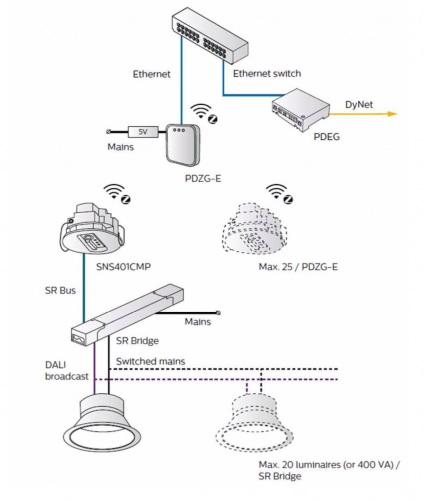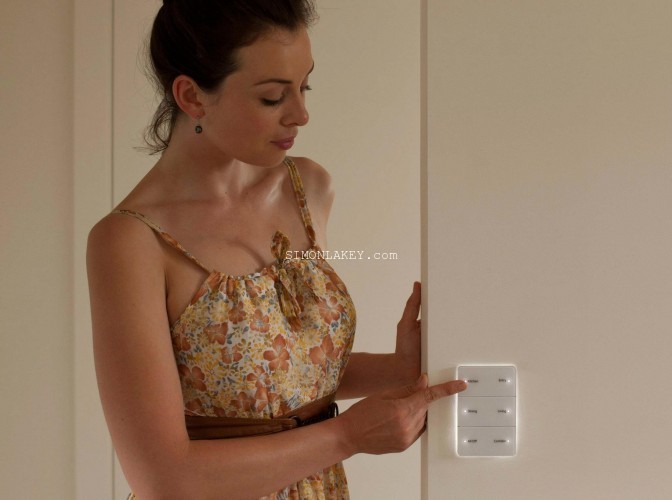Philips Dynalite has introduced the wireless extension to their networked lighting control system. With the release of the Philips Dynalite ZigBee gateway, and ZigBee receiver and multifunction sensor, Dynalite now enables wireless control of DALI luminaries.
The Philips Dynalite wireless system offers all the benefits of an intelligent control system, without the need for extra control cabling. This addresses the challenge of commercial building owners: how to reduce day-to-day operating costs of their existing buildings while maintaining comfort and productivity.
Wireless Architecture
The new wireless products can be used in combination with the entire Philips Dynalite product portfolio, enabling hybrid deployments.

Philips Dynalite ZigBee Gateway

The PDZG-E ethernet to ZigBee gateway is a wireless communication hub that connects up to 25 ZigBee receiver/integrated sensors (SNS401CMP) to the Philips Dynalite lighting control system. The gateway translates communications between ethernet and ZigBee to provide reliable wireless lighting control.
More information
Specification sheet
Installation instructions
Philips ZigBee Receiver with Multifunction Sensor

The Philips SNS401CMP ZigBee sensor node receives ZigBee communications from the Philips Dynalite ZigBee gateway. These messages are then forwarded to other nodes in the wireless mesh network.
This device also features an occupancy and daylight sensor to enable further entry savings, and can control a DALI broadcast channel (via a Philips Xitanium SR bridge),and a 1-10V channel (via a Philips Advance SR bridge).
More information
Specification sheet
Installation instructions
Philips SR Bridge

The Philips Xitanium SR Bridge powers the wireless sensors, and controls a group of DALI or 1-10V fixtures.
Specification sheet
Commercial brochure
Design guide
Wireless Lighting Control
An introduction to wireless lighting control with Philips Dynalite brochure is available, that provides an overview of the system.
- The retrofit solution
- Reliable cable-free communication
- System architecture
This series of articles focuses on products from the Philips Dynalite networked lighting control portfolio. Many industry professionals regard Philips Dynalite as being the world’s best lighting control system, that I have represented with Lightmoves for many years. SimonLakey



